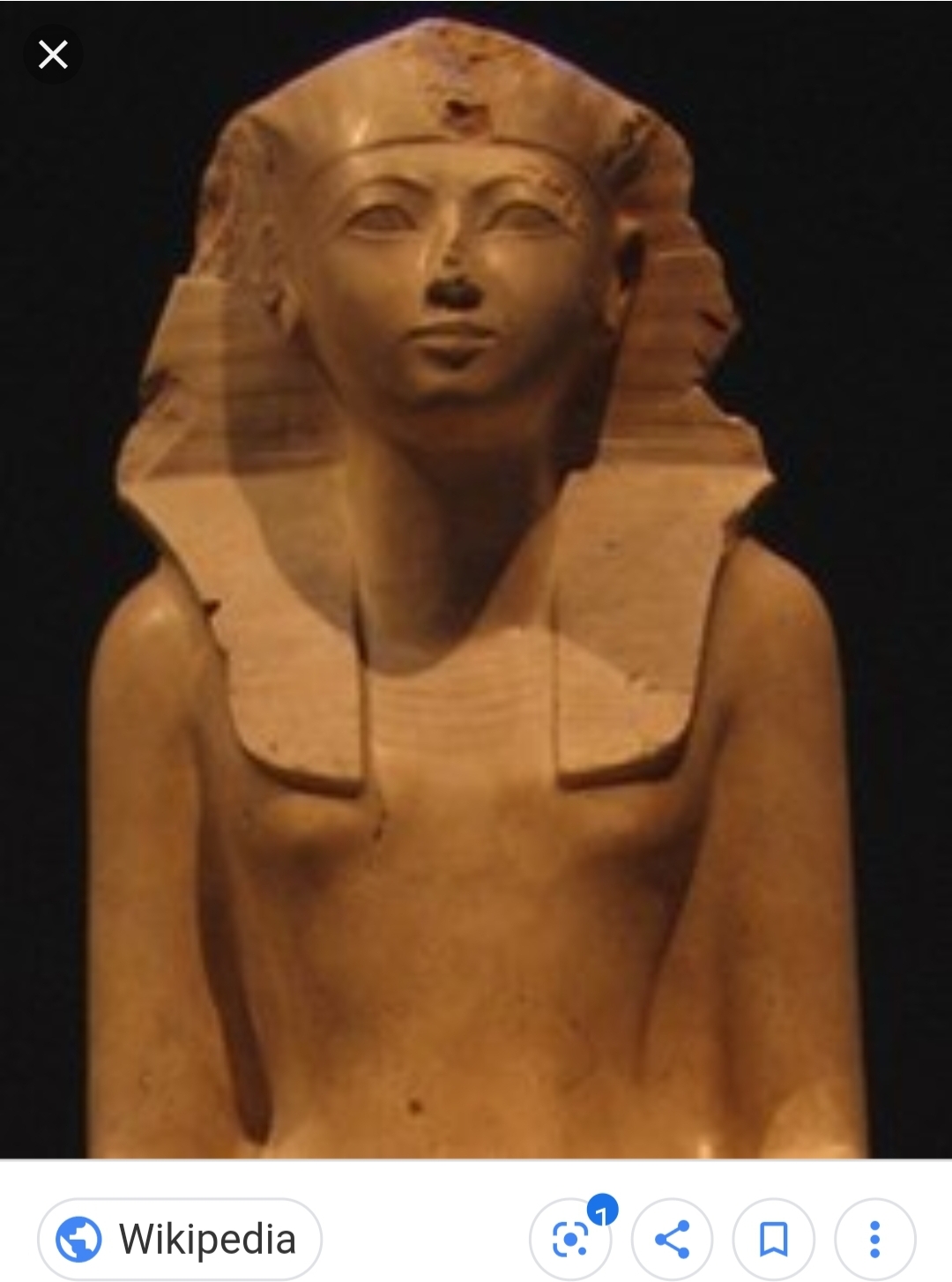
"Now my heart turns to and fro, In thinking what will people say, They who shall see my monument in after years, And shall speak of what I have done." -Inscription on one of Hatshepsut's mortuary obelisks at Karnak
170) Hatshepsut
Egyptian Pharaoh who Has Been Falsely Identified by Many as the First Woman in Egyptian History to Rule in her Own Right as Pharaoh
Born: c.1508 BC, Ancient Egypt
Died: c.1458 BC, Ancient Egypt
There was at least one woman before Hatshepsut that did so—Sobekneferu.
Hatshepsut was the daughter of Thutmose I and the wife of Thutmose II (her half-brother). They married when Hatshepsut was around twelve years old.
When Thutmose II died, Hatshepsut became regent for her stepson Thutmose III before later taking complete control of the country.
Hatshepsut is remembered for being an ambitious builder (just look at her funerary complex at Deir el-Bahri as an example) and for expanding trade outside the borders of her empire (with a land called Punt—and literally modern day scholars have no idea where that was, we know how beautiful and amazing it was but the Egyptians forgot one key detail—writing down where the heck it was geographically!).
Hatshepsut ordered that she be depicted as a male in nearly all sculptures and images of herself in order to assert her power; and wore the false beard and other regalia to further support her claim.
The reason why Hatshepsut took control of the throne is debated—with historians split between sole ambition on her part to possibly trying to avert a political crisis and save the throne for her stepson someday.
Hatshepsut had one daughter from her husband—Neferure—who she might have been trying to raise as her successor.
Some historians also like to romanticize her relationship with her head adviser Senenmut but there is little evidence to support the claim. The rumor of a romance between the pair is not new however; some of the earliest crude graffiti ever found depicts Senenmut and Hatshepsut in a, ehem, shall we say compromising position?
Hatshepsut died from an infected abscess in her mouth after having a tooth pulled. Remember people, always take care of your teeth! Dental health is just as important as mental health!
Late in Hatshepsut's stepson’s reign he did everything in his power to erase his stepmother’s existence—explaining her absence from the king’s list and scholars’ attention until her rediscovery in 1822.
In 2007, Hatshepsut's mummy was positively identified by Zahi Hawass and now rests in the Cairo Museum.
Badges Earned:
Find a Grave Marked
Rejected Princess
Located in my Personal Library:
Rejected Princesses by Jason Porath
Ancient Egypt: An Introduction by Salima Ikram
Arsinoe of Egypt and Macedon: A Royal Life by Elizabeth Donnelly Carney
Bygone Badass Broads: 52 Forgotten Women Who Changed the World by Mackenzi Lee (This one falsely claims her as the first female pharaoh)
Daughters of Isis: Women of Ancient Egypt by Joyce Tyldesley
The Encyclopedia of Ancient Egypt by Helen Strudwick
King Tutankhamun: The Treasures of the Tomb by Zahi Hawass
The Great Book of Ancient Egypt: In the Realm of the Pharaohs by Zahi Hawass
100 Greatest Mysteries: The World's Secrets Revealed (Magazine by History)
The Oxford Encyclopedia of Women in World History Edited By Bonnie G Smith
National Geographic History Magazine Article "Temple of Hatshepsut: Rock of Ages" by David Rull Ribo (March/April 2024 Edition)
Princesses Behaving Badly by Linda Rodriguez McRobbie
Scanning the Pharaohs by Zahi Hawass and Sahar Saleem
Secret Egypt by Zahi Hawass
Uppity Women Speak Their Minds by Vicki León
Warfare and Weaponry in Dynastic Egypt by Rebecca Angharad Dean
The Woman who Would Be King by Kara Cooney
Women in the Valley of the Kings: The Untold Story of Women Egyptologists in the Gilded Age by Kathleen Sheppard
World Mythology in Bite-Sized Chunks by Mark Daniels
When Women Ruled the World: Six Queens of Egypt by Kara Cooney
Who Knew? Women in History: Questions That Will Make You Think Again by Sarah Herman
The Pharaohs by Dr. Joyce Tyldesley
Unwrapping a Mummy: The Life, Death, and Embalming of Horemkenesi by John H Taylor
National Geographic Presents "Queens of Egypt When Women Ruled the World" by Kara Cooney
Sources:
https://www.rejectedprincesses.com/princesses/hatshepsut

